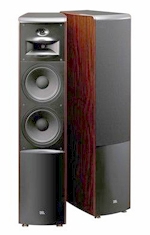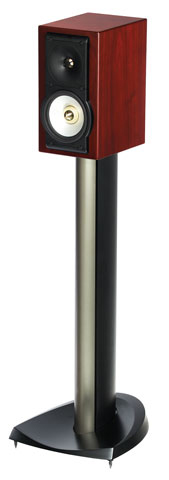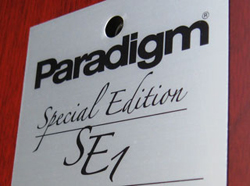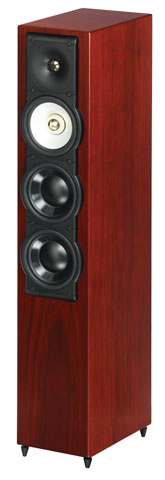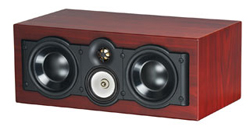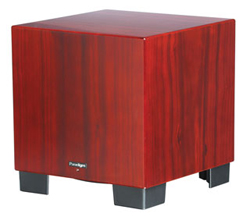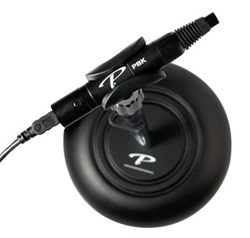Introduction
Forever it seems here at Secrets (and everywhere really) people come asking for a home theater gear shopping list, hoping there is some inside knowledge to be unearthed which will get them world class audio for a ridiculously low price. More sympathetic to the notion of “limited funds” I could not possibly be, but fact is, with speakers at least, it is quite literally impossible in that unlike electronics and “digital” stuff which gets smaller and cheaper by the minute, speakers are inherently analogue, physical, mechanical devices. Top shelf quality IS going to cost you something.
Speaker technology has come to a point where realistically we can’t be looking for some phenomenal breakthrough anymore which would usher in a miraculous new price/performance ratio, but that hasn’t stopped Paradigm from continuing to reach. Our subject today is no less than their new Special Edition line of speakers which, according to Mark Aling, Marketing Manager for Paradigm, are a “design exercise”, a sort of “lets see what we’ve learned” thing. A little mysterious, or at least cryptic of him wouldn’t you say? Let’s find out what he’s talking about!
Specifications
SE 3
- Design: Four-driver, 2-1/2-way Floor-standing Speaker
- 2nd-order Electro-acoustic Crossovers at 2.0 kHz and 600 Hz
- Drivers: One 1″ Dome Tweeter, One 5.5″ Mid/Bass, Two 5.5″ Woofers
- MFR: 65 Hz – 20 kHz, ± 2 dB On-Axis, 65 Hz – 15 kHz ± 2 dB 300 Off-Axis
- Sensitivity: 93 dB/Room; 90 dB/Anechoic
- Nominal Impedance: 8 Ohms
- Dimensions: 34″ H x 6.5″ W x 10″ D
- Weight: 36.9 Pounds/each
- Finishes: Rosenut, Black Gloss
- MSRP: $749/each USA
SE 1
- Design: Two-driver, 2-way Bookshelf/Stand-mounted Speaker
- 2nd-order Electro-acoustic Crossover at 2.0 kHz
- Drivers: One 1″ Dome Tweeter, One 5.5″ Mid/Bass
- MFR: 70 Hz – 20 kHz, ± 2 dB, On-Axis; 70 Hz – 25 kHz, ± 2 dB, 300 Off-Axis
- Sensitivity: 88 dB/Room, 85 dB/Anechoic
- Nominal Impedance: 8 Ohms
- Dimensions: 11″ H x 6.5″ W x 8.5″ D
- Weight: 12.9 Pounds/each
- Finishes: Rosenut, Black Gloss
- MSRP: $329/each USA
SE Center
- Design: Four-driver, 3-way Center Channel Speaker
- 2nd-order Electro-acoustic Crossovers at 2.1 kHz and 300 Hz
- Drivers: One 1″ Dome Tweeter, One 3.5″ Midrange, Two 5.5″ Woofers
- MFR: 75 Hz – 20 kHz, ± 2 dB, On-Axis; 75 Hz – 17 kHz, ± 2 dB, 300 Off-AxisFrequency Response:
- Sensitivity: 91 dB/Room, 88 dB/Anechoic
- Nominal Impedance: 8 Ohms
- Dimensions: 7″ H x 17.5″ W x 9.5″ D
- Weight: 20.7 Pounds
- Finishes: Rosenut, Black Gloss
- MSRP: $549 USA
SE SUB
- Design: Sealed Enclosure
- Driver: One 10″ Polypropylene
- Amplifier: 300 Watts RMS, 900 Watts Peak, Class D
- Low-Pass: 35 Hz – 150 Hz; Bypass Option
- Phase: Variable 00 – 1800
- Inputs: Line Level RCA
- Dimensions: 11.4″ H x 11″ W x 11″ D
- Weight: 14.1 Pounds
- Finishes: Rosenut, Black Gloss
- MSRP: $749 USA
- Paradigm
Design
Honestly, Paradigm had gotten carried away this past decade when it came to models. They, literally, had too many. They narrowed things down in 2006 when then melded their two longest running speaker lines, the very affordable Performance Series (which included such classics as the original Titan) and the Monitor Series (which included legends like the Monitor 5se MkII). Not counting specialty speakers such as in-wall, outdoor, or lifestyle, this move distilled Paradigm’s offerings down to just three price points: the new amalgamated Monitor, the Reference, and Signature series.
Why come out with a new, fourth offering, sandwiched between Monitor and Reference? Special Edition is a nice marketing cliché but in reality this new, limited lineup is Paradigm’s essay at applying lessons learned and experience gained from the past five or so years of R&D and manufacturing. In simplest term they are a blend of technology from both Monitor and Reference lines, creating a sort of “Reference” caliber speaker for those who wished it were available at a slightly lower price point. Keep from the Monitor line that which is solid, add from the Reference line that which makes the greatest difference.
In what this reviewer regards as a most welcome return to more traditional esthetics, the appearance of the SE’s is delightfully discreet. Eschewing the European organic curves in favor of a traditional box with clean edges, these speakers are free from adornments which would draw attention to themselves, relying instead on exquisite, let me say that again, exquisite cabinetry finish work for their beauty. The deep tone of the rosewood veneer is particularly attractive and very versatile in terms of complementing the space they are in. Under the skin is the remarkably solid construction we have come to expect from Paradigm, at any price point. The plastic frame grills attach via magnets, not snaps, so that if you elect not to use them (the drivers ARE gorgeous) the speakers will look just as “finished” either way. Unlike other grills of the sort which require you to “align” them, Paradigm has very cleverly molded a couple pins into the grill frame which mate with hex nuts on one of the drivers so that the grill sits perfectly square without having to eyeball it.
The tweeter, common to all SE models, is straight from the current Reference/Studio series: their proven 1-inch ‘G-PAL’, gold plated aluminum dome with a grossly overbuilt motor structure (by any standard), crossed over at a decidedly low 2kHz (2.1kHz on the center channel model). The 5 ¼” Mid-bass driver and 3.5″ Midrange (on the center) are also borrowed from the Reference line featuring ‘S-PAL’ cones (satin anodized aluminum). The 5 ¼” bass drivers are of the tried and true polypropylene. We’ll talk about the subwoofer technology in a moment.
Set up
The SE1 is a classic 2-way, rear ported “bookshelf” speaker. Thanks to its 5 ¼” mid-bass it is a decidedly small speaker which will be right at home virtually anywhere. It will probably get profiled as the surround speaker of an SE ensemble but we will not discount its potential as a modest output stereo pair when we do the listening a little later. The SE3 is somewhat more exciting: a 2 ½ – way rear ported “floor stander” who’s three cones total a bass-radiating area close to that of a 10″ driver, all in a package which my wife not only didn’t object to, but actually welcomed into our living room (a Florian first). The 2 ½ way design has been instrumental for Paradigm in years past, enabling them to hit a performance/price ratio which makes a great deal of sense. The configuration consists of a full-range 2-way driver compliment (tweeter and mid-bass) supplemented by one or more low-passed woofers (in this particular case two). Not one but two ports are apparent on the back which at first lead me to believe the S3 might be a dual-chamber design. It is not. The two ports, which are different in size, simply average in terms of tuning and gives Paradigm the desired loading with a minimum of port noise.
The center channel, like most of Paradigm’s of late, is a true three-way using the same driver technology as the SE1 and SE3. Specifically, the same tweeter is crossed over at a slightly higher 2.1kHz to a vertically aligned aluminum midrange which in turn crosses over at 400Hz to a pair of flanking poly woofers. This design has proven over and over to be one of the best, if not the best, for a center channel in that in addition to all the sonic virtues inherent to a well made 3-way speaker, this layout affords us a “visually correct” horizontal box free of off axis combing which often plagued the old 2-way d’appolito arrangement of years past.
The SE SUB is in a class by itself in that it doesn’t really seem like a derivative of any of Paradigm’s others, though it certainly borrows technology. It is a small, and I mean miniscule unit which at first glance will probably elicit ridicule, but with further scrutiny will earn much favor. In what is becoming a trend for Paradigm, the SE SUB is a sealed alignment, casting aside the ports and passive radiators. Sealed alignments have been somewhat favored by me over the years, their characteristic shallow roll offs imparting what I feel is a more natural depth. But making it work usually takes an enormous enclosure and commensurately large driver with more than average power behind them. The SE SUB does not break the rules: it makes up for its size by using a driver with insane excursion and an amp of substantial output. While not in the class of Paradigm’s Reference series units, the SE SUB still uses a very efficient class-D amp, quoted by Paradigm as being able to continually deliver 300watts (“dynamically” up to 900). Conspicuous is the lack of heatsink on the back of the unit, which either means its underpowered or very efficient. Glancing at the electrical label, I’d say it was the latter. What is on the back are some good old fashion control facilities: Gain, low pass, and phase, the last two being of chief use to those whose processor does not have proper subwoofer/bass management facilities. Mono or Stereo input is accepted over unbalanced RCA connections.
The SE SUB joins the growing number of Paradigm models to be supported by their PBK, or Perfect Bass Kit. We’ve discussed it at length now in several previous reviews, but to surmise, it is a subset of the ARC (or Anthem Room Correction) “just for the sub”. The kit includes PC software, USB microphone plus stand, and a USB cord to connect the sub to the PC. The software takes readings of the subwoofer throughout your listening area, and applies Paradigm/Anthem’s unique and very well received correction. Careful placement of a sub and a minimum of attention to room acoustics still pay great dividend, but especially with a sub who’s calling card is that it can be tucked away, correcting for less than ideal placement may well be worth the extra few hundred for PBK.
In Use
It’s worth jumping right into some analytics here and point out that the SE3 is decidedly efficient. We sort of expect this with large, floor standing speakers yet the SE3 is far from being described as “big” in the classic sense. It pulls off a full 90dB anechoic which, though a far cry from the legendary horns of Klipsch, is head and shoulders above any of Paradigm’s bookshelves, and even betters by a dB the rough equivalent from their Reference series. This makes them a very exciting proposition for setups with more modest power amplification such as affordable AV Receivers (or the now rare tube setups). The SE1’s on the other hand are the exact opposite with an 85dB anechoic efficiency (I almost cringe as I write that). It’s an ironic fact of speaker engineering that the speakers which might benefit from expensive amounts of power tend to be the ones asked to work without. Nevertheless…
Voicing of both the SE3 and SE1 is exactly what we would expect from Paradigm: their signature overly neutral and responsible sound. I say “overly” because time and time again we’ve heard Paradigm speakers described as bright, or a little heavy handed in the treble, but we continue to confirm that that almost always stems from them being evaluated in unfortunately typical, overly reflective living spaces. Move them into a more acoustically responsible space where a speaker may be heard more for what it truly is and one immediately realizes just how tight and true the Paradigms are. Here was no exception.
I started with the SE3s in our living room which, being the province of my wife, is afforded no acoustical treatment of any kind. Here the SE3’s were a most pleasant speaker with clear, unbiased midrange, crisp highs, and a surprisingly robust and fully resolved low end. Turn the volume up to “rock out” level though and the reflections from the picture window start to reach a level which one simply has to object to. Please do not take away from this the misconception that most home listening spaces would benefit from a speaker with skewed treble response. We ALWAYS want to start with a speaker true to the signal. Rather this is just further testament that true hi-fi in the classic sense requires, in addition to great equipment, good acoustics, or at very least top shelf electronic corrections such as Anthem’s own ARC, or the much lauded Audyssey. Moving the SE3’s to my acoustically treated theater only confirmed my suspicions: I could have Dire Straits playing at levels I judiciously only take in very sparing doses, and experienced no fatigue whatsoever. On the flip side, at responsible listening levels, in the theater the SE3’s were simply awe inspiring, eliciting the sort of listening experience which sucks you into the chair and won’t let you leave. At the end of a song or album you almost feel let down by the silence. Bass is something which the SE3’s placement is particularly sensitive to. Get it wrong in your room and they, frankly, will sound quite hollow. Get it right and you’ll think there is an articulate subwoofer in the room.
What can I now say about the SE1’s which does not come intuitively? They are no miracle, yet they are an excellent choice for smaller, intimate stereo setups or of course as either satellites bound to a subwoofer, or surrounds in the rare instance dipoles don’t work well. Other than their lacking bass compared to the SE3’s, they extol pretty much all the other virtues in kind. Interestingly though, there is enough low end that Audessey (mis) interprets them as “full range” (they do in my theater deliver a solid 40Hz!).
The SE Center on the other hand is almost in a class by itself. I find myself sounding a little like a broken record here, but Paradigm’s now tried and true configuration changes not from model to model with good reason: it just plain works. It could be argued that the SE Center is higher performance than even the SE3 in that it is a true 3 way design, and as such the “money” is going where it is needed most: even in this day of 7.1 uncompressed or lossless sound, that ONE channel, the center, is still responsible for 90% of the soundtrack. Better to have nothing but a top shelf center than a full 7.1 setup which sounds like paper cups I say. The SE Center delivers in spades in that I don’t have superlatives for you. In actually using them, impressions boil down to how much I “thought” about the speaker, and less is definitely more in that only if something is wrong should I notice or even think about the speaker. Not once did I “notice” the SE Center, testament to the fact that it skews the sound not one iota, and instead just presents what is there in the soundtrack. We can ask no more of a speaker.
The SE Sub has one remarkable appeal up its sleeve: its size. Never would my wife have allowed a subwoofer into her living room, yet the SE Sub was there, in plain sight mind you..and she didn’t even know it! When she asked “where did you put the subwoofer thingy they sent you?”, disbelief is the only way to describe her reaction when I pointed it out. In practice the SE Sub delivers excellent, well defined bass within a very respectable window. While it might be hard to actually “hurt” the thing what with the robust build of the driver and amp, it’s not beyond the realm of the possible to ask more output of it than is practical. Even so, it does not distress audibly, but rather starts to take on a bit of a one-note quality. At responsible output, useful extension reaches well down to the low 20s when the room’s acoustics and SE Sub’s placement therein is equal to the task.
Ironically, that is the SE Sub’s ace in the hole: it is so small that dialing it in is not the usual backbreaking, and decor compromising chore. And as if that was not enough, as previously mentioned the SE Sub joins the growing list of models which support Paradigm PBK (Perfect Bass Kit) which once again shaped the subwoofer response into sweet linearity. The auto on/off works perfectly in that it powers on at the slightest signal (without any gauche “thump”) and confirms it with a fairly discreet blue light. Power consumption which I now take a critical look at in all CE equipment, but subwoofers especially, comes in at a cautionary 9 watts when the Sub SE is “off” (about 15watts when on but idle). While not near as bad as the Reference Sub12 I reviewed last year (a full 30 watts when “off”), it is still a far cry from the <2 watts we expect of display devices, receivers, and disc players so the industry (Paradigm included) still has work to do here.
Conclusions
Here at the end I am finding myself failing to articulate just how praiseworthy these speakers are. Maybe that’s because superlatives don’t really work for true high performance speakers in that ideally they should defy such descriptions.
Paradigm’s Reference series speakers have been reviewed to death with unilateral enthusiasm. The SE’s are priced closer to them than they are to the more affordable Monitors and this plays out in the performance and presentation as well. You literally are getting “almost” a Paradigm Reference. For my money, the margin of performance is slim enough that I would definitely give a nod to the SE’s as the greater bang for your buck. The SE3 in particular is one of those speakers I am going to remember 10 years from now like I do the Monitor 11, 5se Mk II, or Titan.
Cosmetically, something which can actually matter with speakers, I actually prefer the SE’s to Paradigm’s other cabinets right now.
When I started this review my attitude was a somewhat cynical “why another line up Paradigm?!?”. Well, I get it now. The “essay” Mark eluded to is a success: they CAN pull from their technology pool and come up with a new price/performance ratio which is very much worth hitting. Grab yours before they decide that “Special Edition” really means “Limited Edition”!


